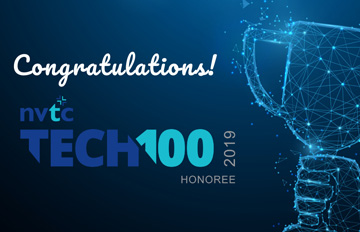In our uncertain world, the fundamentals are changing, the landscape is changing, our core technologies are changing. You are being challenged to use the capabilities you have, and build new ones, as you maintain or defend your place in the market. That requires being clear about what matters and how resources should be allocated. And looking for emerging opportunities that can be exploited. Being poised for success in the small moments will help you prevail for the big ones too.
Strategy hasn’t changed; it’s the ability to take action under pressure. A lack of guidance (for employees, priorities, resources) leaves an organization unmoored. Afloat, but not ready to sail. A strategic plan provides gives direction and focus, helping your crew stay the course, even if your destination changes or there’s rough seas.
In this issue, we’ll round up some solid advice and how strategic planning can be used to look ahead and weather the challenges you’re facing – or could face.
What are you planning for in 2020? Let’s continue the conversation. Shoot me an email or give me a call.
Edward Tuorinsky
Managing Principal
DTS
Edward.Tuorinsky@consultDTS.com
571.403.1841
Know the Difference: Strategic versus Tactical
Don’t let yourself get so caught up in day-to-day activities that you forget the big picture. Strategy is the long game; tactics are the steps that help you get there.

A Changing Mind Set for 2020
There are some who argue that strategic planning is dead – and they might have a point. In an era where change is constant, creating a plan that goes beyond 2-3 years is nearly impossible.
The idea isn’t to abandon strategic planning of course. Rather organizations must revisit plans annually (or more often), and use long-term, high-level strategies to guide shorter term, tactical plans. The time, money and brain power it takes to craft your strategy provides clarity in two areas:
- The way your organization meets the expectations of customers and employees.
- How your organization delivers on its true competitive advantages.
Those shouldn’t change because of new software, social media or the economy.
With this mind set, strategic planning for 2020 becomes an easier lift. You might not need to change your strategies. Instead, your task is more about revisiting the past year, developing new annual goals and determining how you will apply your strategy to achieve them. The process should be agile and adaptable, to address both the year’s operational climate and any new or emerging opportunities and challenges.
How do you know when it’s time to change your strategy? When you need to distance yourself from competitors or when they introduce distinctly different marketing or sales campaigns; when you need to adjust for regulatory changes; when you’ve had significant technological changes; or when there is a major social or environmental change, like the #MeToo movement, that directly impacts your business or your target customers.
Jumpstart Your Strategic Plan: Six Questions to Get You Thinking Critically
 Now is the time to block off an hour and jot some notes about what has worked well this year, in your team, division or organization-wide, and what areas need more support. These are the first steps towards creating a strategic plan for 2020.
Now is the time to block off an hour and jot some notes about what has worked well this year, in your team, division or organization-wide, and what areas need more support. These are the first steps towards creating a strategic plan for 2020.
Once you have your list, a healthy next step is to ask others, at all different levels and from across the organization, what they think about the year’s progress. If you really want to be enlightened, expand your questioning to customers and vendors too.
The input, along with data, will help you determine where things need to be adjusted for the coming year. In fact, you might find that it would be good to tweak your strategic plan each quarter—or even more often—so it continues to reflect changes in personnel, your industry or environment, new technology, competitive forces, and other impacts.
Here are some questions to jumpstart your thinking:
- What are your goals? Where do you want to be at the end of 2020?
- What worked well for you this past year?
- What were the disasters or significant challenges?
- What do you hope to do differently next year? What are your lessons learned?
- Are you going to change policies, or launch a new product?
- What are your deadlines? Look up major conferences or events when you might make announcements.
- Are you committed your changes? Do you have the resources in place to be successful?
Identifying Emerging Trends
 Get a handle on the future before you start to plan for 2020. You probably have a good idea about the hot button topics and trends in your own industry or market, but how do you sniff out the emerging influences that can make or break the next year?
Get a handle on the future before you start to plan for 2020. You probably have a good idea about the hot button topics and trends in your own industry or market, but how do you sniff out the emerging influences that can make or break the next year?
Look inward.
Lay out all the assumptions you have about how your organization works and ask yourself if they are valid. Dig into your data and your own track record to determine: Who were your top stakeholders or customers? How efficiently did projects get complete? What cost overruns or surprises challenged your budget? Are you the market leader?
Flip things around.
What worked? Who was successful? Where did the best ideas come from? What were the moments you celebrated? The answers might point you in a new direction.
Go outside your industry.
Ask friends and business associates in other industries what they saw as the top trends this year. Or check out popular trade shows from other industries to see what presenters were talking about. How can those trends apply to your organization? Often trends, particularly in technology, start with a small group and spread to other areas or industries.
Hit the books.
Check out business publications and online newsletters to determine what the gurus and influencers are saying. You don’t have to believe everything you read but it’s good to get a new perspective and some market research.
Keep your eyes open.
What businesses are expanding, and which ones are closing? Why? What are your competitors doing? Who’s changing jobs? All of these external signs can indicate a change in the wind.
DTS in the News

NVTC’s Tech 100 list recognizes companies & leaders in the region’s technology community that demonstrate dedication, vision and innovation. We are pleased to announce that we have been named an NVTC Tech 100 honoree! http://bit.ly/2qZqkBz
About DTS
DTS consultants go far beyond just “getting the job done.” We continually find better, more efficient and more effective ways to satisfy the needs of our public- and private- sector clients. DTS provides full lifecycle Management and IT consulting services, and can support your organization by researching and answering specific questions, solving critical issues or helping you plan for the future. Among a crowded field of contractors, DTS stands out for the quality of our people, the power of our approach, and the impact of our results. www.consultDTS.com
Continue the conversation:
Email sales@consultDTS.com or call 571.403.1841


